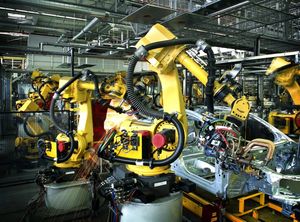
Can We Really Trust AI in Education?
Everyone who has ever used AI tools knows that they are not perfect yet and make mistakes. Even though they simplify many processes and save time, the threat of getting and spreading inaccurate information remains quite alarming, especially when talking about classrooms and universities worldwide. On the one hand, we can consider the positive AI impact on education and the way it helps teachers improve the learning process. On the other hand, we shouldn’t ignore the negative impact of artificial intelligence on students and their ability to process new information.
Here we are asking a debatable question of whether we can truly trust AI in education. It’s as relevant as ever today because more and more students use AI tools like ChatGPT for schoolwork and consider relying on this technology acceptable in terms of solving math problems and writing essays.
Is students using AI an unprecedented opportunity or a significant concern, then? Some view AI as an educational game-changer, while others see it as a dangerous phenomenon that threatens academic integrity and learning quality.
Why Some Educators Remain Skeptical
Only a small fraction of teachers, fewer than one in ten, see these tools as having a positive rather than a negative impact. Academic integrity tops the list of educators’ worries, as they fear that the usage of AI in schools encourages shortcuts that make the learning process less effective. When students can generate essays at the click of a button, traditional writing skills may atrophy, and the ability to think critically through complex problems could diminish.
When reflecting on why AI is bad for education, teachers’ skepticism often comes from direct experience with AI misuse, from plagiarized assignments to students who struggle to explain the work they've supposedly completed independently.
In addition, many problems with AI in education arise with regard to equity. Not all students have equal access to premium AI tools or the digital literacy skills needed to use them effectively. Moreover, awareness of ChatGPT is highest among teens from households with higher yearly incomes. This digital divide threatens to make the existing educational gaps even more noticeable.
Why is AI bad for students if it provides them with access to all the accumulated human knowledge? Well, we also need to keep privacy and data security in mind. When students interact with AI systems, technology companies can use their personal information, writing samples, and academic performance data.
Let’s Look at the Bright Side
To answer the question “Should AI be used in schools?”, it’s crucial to discuss what it’s capable of. We’ll start with the OECD's 2025 education trends report, which emphasizes how advances in artificial intelligence and other technologies reshape key processes in the education system.
For teachers, AI and education efficiency go together, as they can gain a lot from the automation of time-consuming tasks. For instance, one of the possible benefits of artificial intelligence in education is that teachers get more time to focus on individualized student support and creative curriculum development while the corresponding tools help them create practice quizzes and generate initial drafts of lesson plans.
And how can AI help students without hurting their skill development? According to the Digital Education Council Global AI Student Survey, they can use AI tools to find the information they need rather than to create content and submit it as their own:
Without a doubt, students benefit from AI's ability to break down complex materials into more comprehensive bits that are easier to process. For example, language learners can enjoy instant feedback on their pronunciation and adapt it right away.
Nevertheless, the key insight emerging from using AI in education is positioning technology as a helpful assistant rather than a replacement for human expertise. AI’s personalization and adaptiveness address the existing challenge within the standard classroom environment where teachers can’t explain the same concept using dozens of approaches so that every student understands it clearly.
Beyond the Hype: Real AI Tools in the Classroom
These are not just positive words without practical implementation, as numerous AI tools are already demonstrating practical value in educational settings.
Khan Academy's AI tutor provides personalized guidance that adapts to individual student needs, while Duolingo's AI-powered conversation practice offers language learners opportunities to practice speaking skills with responsive virtual partners. Grammarly helps students improve their writing through real-time feedback on grammar, style, and clarity.
Some AI tools aim to make studying more efficient rather than overtaking the whole process. For example, the Textero AI text summarizer can condense long articles into clear summaries and help students focus on core concepts, though it’s crucial that they still engage critically with the source material and analyze every statement. Such tools can help students manage information overload and identify key themes for deeper exploration.
It’s possible to experience all the AI benefits in education by using tools that encourage critical thinking rather than passive consumption and integrate seamlessly with existing pedagogical approaches.
Tools that explain their reasoning minimize the risks of AI in education and encourage students to verify information and dive deeper into every topic they explore.
Experts Speak: Trust AI, but With Boundaries
Educational experts and policymakers are aligning on a key message: AI should enhance teaching instead of replacing it. The OECD notes that while AI and robotics are rapidly advancing, human judgment and critical thinking are still irreplaceable in classrooms.
Clear rules and preparation are essential. Students must learn digital literacy to understand AI’s limits, while teachers need training to guide its use. Policy frameworks from groups like the OECD, UNESCO, and the World Bank stress transparency, accountability, and purpose: AI should support learning goals, not simply make tasks easier.
The World Bank warns that technology alone won’t improve education. We also need strong pedagogy, infrastructure, and early digital education.
The consensus is clear: AI can be a powerful classroom ally, but only if it strengthens (instead of replacing) the human side of learning.
Building a Smarter, Responsible Future for Learning
AI is reshaping classrooms, but experts stress that trust in the technology is something that develops over time. Its benefits, from personalized learning to streamlined administration, are real, but only if we use it responsibly.
Researchers also argue that the effective use of AI in education requires transparency and rigorous testing. Tools should strengthen critical thinking and preserve human decision-making, rather than turning into the only way of providing students with new knowledge.
Therefore, the future lies in balance, not complete rejection or blind adoption. Thoughtful integration can harness AI’s strengths while protecting the human core of the interaction between students and educators. That means prioritizing creativity and lifelong learning alongside digital skills.
The debate is no longer about whether AI will transform education, as it already has. The challenge is ensuring technology serves education’s true purpose: preparing students to think, create, and thrive.
Media Contact
Company Name: Pew Research Center
Contact Person: Maya Pottiger
Email: Send Email
Country: United States
Website: https://www.pewresearch.org





